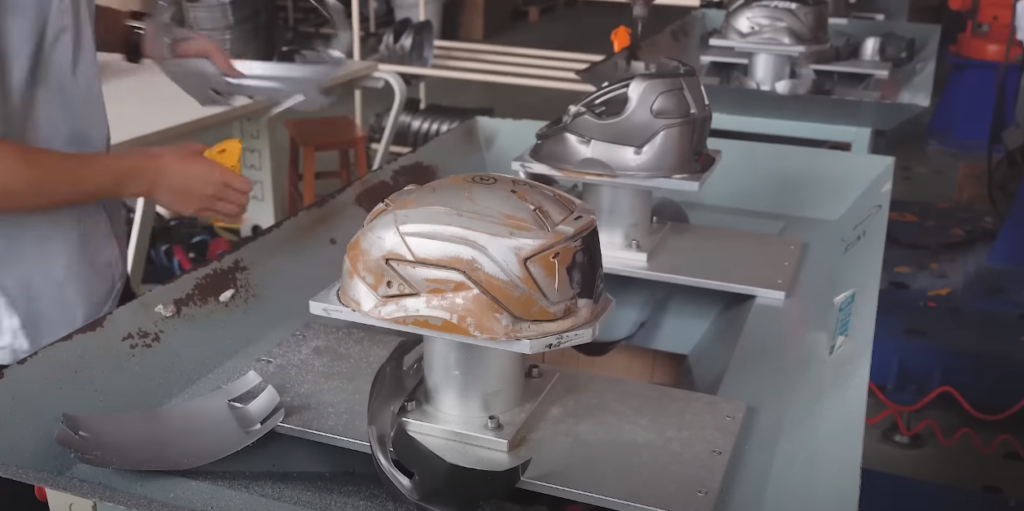Helmets are an essential piece of protective gear used in a variety of activities, from cycling and motorcycling to construction work and sports. They serve a critical purpose in safeguarding our heads from potential injuries and concussions. But have you ever wondered what materials are used to make helmets and how they are constructed to provide optimal protection? In this in-depth exploration, we will delve into the world of helmets, uncovering the materials, technologies, and manufacturing processes that make them so effective at keeping us safe.
The Basics of Helmet Materials
Helmets are crafted from a combination of various materials that work together to absorb impact energy and distribute it across the helmet’s surface. These materials are carefully chosen to provide both protection and comfort. The primary materials used in helmet construction include:
| Helmet Component | Description |
|---|---|
| Polystyrene Foam (EPS) | EPS foam is the core material of most helmets. It is a lightweight and shock-absorbing material known for its ability to dissipate impact energy effectively. When subjected to a force, EPS foam compresses, reducing the force transmitted to the head. |
| Polycarbonate Shell | The outer shell of many helmets is made from polycarbonate, a tough and durable plastic. This shell serves as a protective layer that helps distribute impact forces and resist abrasion. |
| Aramid Fiber (Kevlar) | Aramid fibers, such as Kevlar, are used in some high-end helmets for additional strength and impact resistance. Kevlar is known for its exceptional tensile strength and is often used in ballistic armor. |
| Expanded Polypropylene (EPP) | EPP foam is a more advanced foam material, often used in high-performance helmets. It offers a higher level of impact protection and can withstand multiple impacts without losing its effectiveness. |
| MIPS Liner | Some helmets feature a MIPS (Multi-Directional Impact Protection System) liner, which is a low-friction layer designed to reduce rotational forces during an impact. This added technology enhances the helmet’s protective capabilities. |
| Ventilation and Comfort Padding | Helmets also include soft padding made from various materials like foam, gel, or fabric. These pads provide comfort and help in wicking away sweat. Ventilation systems, often made of mesh and plastic, improve airflow to keep the wearer cool. |
Now that we have a basic understanding of the materials used in helmet construction, let’s take a closer look at how these materials come together to create a protective helmet.
Helmet Construction: How It All Comes Together

Helmets are constructed using a combination of layers and components designed to maximize safety and comfort. The construction process involves several key steps:
1. Shell Formation
The outer shell of a helmet is typically made of polycarbonate, which is molded into a shell shape. This shell provides the first line of defense against impacts and abrasion. It is designed to be both strong and lightweight to ensure optimal protection without causing discomfort to the wearer.
2. EPS Foam Core
Inside the shell, there is a layer of EPS foam. This foam is expanded and molded to fit the inside of the helmet shell precisely. It serves as the primary impact-absorbing component, responsible for dissipating the force of an impact and reducing the risk of head injuries. The thickness and density of the EPS foam can vary depending on the helmet’s intended use and safety standards.
3. MIPS Liner (Optional)
Some helmets incorporate a MIPS liner between the EPS foam and the comfort padding. The MIPS liner is designed to allow a limited degree of rotational movement between the helmet and the head, reducing the rotational forces that can cause brain injuries during angled impacts.
4. Comfort Padding and Ventilation
The interior of the helmet is lined with soft padding to provide comfort and a snug fit. These pads are often made from materials that wick away moisture to keep the wearer dry. Ventilation channels and openings are strategically placed in the helmet to allow airflow and prevent overheating during physical activities.
5. Straps and Buckles
To keep the helmet securely in place, adjustable straps made of nylon or similar materials are attached to the helmet shell. Buckles and fasteners ensure that the helmet stays firmly on the wearer’s head without excessive movement.
6. Testing and Certification
Before helmets are sold to the public, they undergo rigorous testing to ensure they meet safety standards. These tests evaluate impact resistance, penetration resistance, strap strength, and other crucial safety criteria. Helmets that pass these tests receive certifications from relevant organizations, such as the Consumer Product Safety Commission (CPSC) for bicycle helmets or the Department of Transportation (DOT) for motorcycle helmets.
Innovative Helmet Technologies

In addition to the core materials and construction methods, helmet manufacturers continually strive to innovate and improve helmet safety. Here are some notable technologies and features that enhance helmet performance:
- WaveCel Technology: Developed by Bontrager, WaveCel is a collapsible cellular structure that lines the inside of the helmet. It is designed to provide both rotational and linear impact protection, making helmets equipped with this technology more effective at reducing the risk of head injury;
- Aerodynamics: Helmets designed for cycling and racing often incorporate aerodynamic features to reduce drag and increase speed. These helmets are engineered to minimize air resistance while maintaining safety standards;
- Bluetooth Connectivity: Some modern motorcycle helmets are equipped with Bluetooth technology, allowing riders to stay connected to their devices and communicate while on the road without compromising safety;
- Smart Helmets: Emerging technologies enable helmets to include sensors and communication systems that can detect accidents, provide real-time data, and even call for help in the event of a crash;
- Customization: Certain helmet manufacturers offer customization options, allowing users to choose colors, graphics, and accessories to personalize their helmets while maintaining safety standards.
Conclusion
Helmets play a vital role in protecting our heads from potential injuries during a wide range of activities. Understanding the materials and construction methods used in helmet manufacturing can help you make informed decisions when choosing the right helmet for your needs. Remember that safety standards and technologies continue to evolve, so it’s essential to stay up-to-date with the latest advancements to ensure optimal protection. Whether you’re cycling, motorcycling, or engaging in any activity that requires head protection, a well-constructed helmet can make all the difference in keeping you safe.
FAQ
The outer shell of a helmet serves as the first layer of protection, dispersing and spreading impact forces across the helmet’s surface. It also provides abrasion resistance and helps maintain the helmet’s structural integrity.
EPS foam absorbs impact energy by compressing upon impact. This compression reduces the force transmitted to the head, helping to prevent injuries like concussions and skull fractures.
While not mandatory, a MIPS liner can significantly enhance the helmet’s safety by reducing rotational forces during an impact. Helmets with MIPS technology are often recommended for activities with a higher risk of angled impacts, such as cycling or skiing.
It is generally recommended to replace a helmet after a significant impact, even if there are no visible signs of damage. The integrity of the helmet may be compromised, making it less effective in subsequent impacts.
To ensure a proper fit, measure the circumference of your head and choose a helmet size that corresponds to your measurement. Helmets should fit snugly without being overly tight. Most helmets come with adjustable straps to fine-tune the fit.
